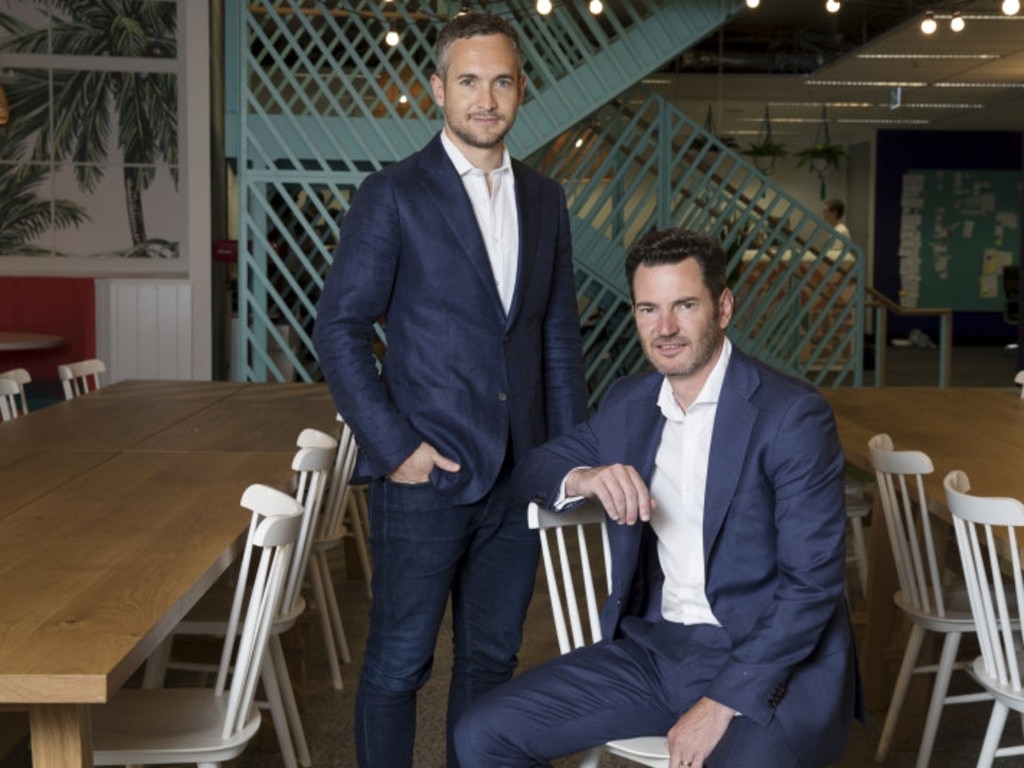
Eisen and Molnar have created a product that in a matter of four years from listing has created on paper $39bn in value for themselves and their backers.
That should provide some incentive to the rest of the fintech sector about what is on offer.
Reinventure’s Danny Gilligan says there is now a “war of engagement” between the start-ups and the incumbent banks.
Afterpay’s founders have played the battle superbly.
The incumbents include the likes of PayPal, which are rolling out their own models, as with smaller full-service operators like Humm Group.
“Buy now, pay later” isn’t defined as credit, more as a payment service, but regulation is getting to the sector in a few ways, including ASIC’s plan to apply its design and distribution obligations. This puts the onus on the suppliers to have the right products for the right consumers.
Afterpay, it should be stressed, is the market leader in Australia and is across the regulatory issues, knowing the industry is becoming more mature with a high public profile.
Its annual growth has been impressive, with gross merchant volumes up from $5.2bn in 2019 to $21bn in 2021, and revenues up over the same period from $264m to $925m.
But in the last financial year what are called underlying sales present a more mixed picture and arguably a slowing of the growth story.
In Australia, sales increased from $2.2bn in the first quarter to $2.6bn in the second before falling to $2.1bn in the third quarter and rising to $2.5bn in the last.
The UK is the third-biggest retail online market in the world after China and the US, but Afterpay sales growth has been at best anaemic, from $300m in the first quarter to $50m in the next three.
Any company has issues with some parts of the world and the US is now the biggest market.
The game for start-ups is to get more distribution before the incumbents get around to innovation, according to Reinventure’s Gilligan.
He is backing the start-ups because of their speed in decision-making.
Afterpay, he notes, has developed to the stage that it “has its own rails, its own ecosystem by embedding finance into shopping, bringing the functions together”.
“It is not about payments, it’s about engagement and that is where the war is,” he says.
“It drives commerce to the retailers and the more people who transact the stronger the partnership.”
That’s what the Square deal is all about: scaling up to get better distribution to take the technology into the future.

Westpac, in the words of Jeffries analyst Brian Johnson, let the fox into the hen house by doing a white label deposit deal with Afterpay.
That deal helped bolster the company’s credentials with its proposed US parent.
Square was founded by Twitter’s Jack Dorsey in 2009, five years before Eisen and Molnar started Afterpay.
Volume in Afterpay’s stock was heavy on Monday with 7.6 million shares changing hands, or more than three times the normal trade, in part because some holders wanted out to avoid taking US stock in the all-scrip deal.
The price closed up 18.8 per cent at $114.80, which is close enough to the scrip value to be worth the trade.
The BNPL sector led the market with Zip up 9 per cent at $7.24.
Left in the wake were the naysayers, with 11 per cent of the register, or 65.8 million shares, held short.
Before Bell Potter broker Hugh Robertson floated Afterpay in June, 2017 he raised seed capital of $8m for what is now a $39bn company.
Modest as ever, Robertson gives all credit to Eisen and Molnar, but as a broker it doesn’t get much better than Afterpay. Indeed, he confided on Monday: “There will never be another one.”
There will be, but Monday’s Square takeover of Afterpay is an extraordinary boost to the Australian fintech sector, showing how the right idea can be scaled to create genuine wealth, with the founders now having a paper value of $2.6bn each.
It is undeniably a credit to the founders, who created a new sector and managed the progress superbly.
Afterpay’s numbers are one thing, but it’s genius is all about relationships, providing a new way for consumers to buy retail and for the shopkeepers to increase their sales and basket sizes.
That is why Dorsey liked the story and is in the process of buying the company.
Afterpay’s spin is all about how it creates value for retailers by bringing more customers to the table buying bigger baskets.
However, retailers are not impressed and, against the 6 per cent merchant fee charged by Afterpay, CBA at 1.4 per cent looks more promising.
Inevitably that gap will close and the RBA will intervene to allow retailers to pass on the fees transparently to customers.
That is another reason why the Afterpay founders are happy to be selling the stock right now.
Still, if the new world is all about data, then Afterpay has taken control from the banks because, while users pay on their debit cards, the payment is to Afterpay, not XYZ shopkeeper.
That means it’s Afterpay that knows who is buying what and when and not the banks, which means it controls the shopping data.
The banks have lost control of the payments system, with fintechs like Afterpay and platforms like Apple grabbing the one thing that put banks in control of their destiny.
Just what Afterpay does with the data is the next question, but right now that’s Dorsey’s issue.
The 31-year-old Molnar will join Square in San Francisco, while his co-founder, Eisen, will remain in Australia keeping in touch with the progress back home.
The game in fintech is to take the relationship to a new scale before the incumbents play catch-up and steals the idea.
Already the incumbents are moving into BNPL, with PayPal and the big card giants entering the space, along with mainstream banks such as CBA.
The Afterpay team has now just leapfrogged them by taking its 16 million consumers and jumping into bed with Square Peg and its 70 million customers.
It’s not just an online retail story but it helps and is growing, which is why Square is buying Afterpay in an all-scrip deal.
The naysayers will look at the peak Afterpay stock price at $160 in February and say the fact that the board agreed to sell at $120 tells you the stock story has peaked.
That doesn’t mean BNPL won’t keep growing from a bigger base.
It will also be opened to the talents of a bigger company with grander plans for distributed ledger finance – bitcoin and all.
Afterpay fills a gap in Square’s consumer offering and in theory that will pay for the deal, or at least that is what Square’s shareholders will be hoping for.








The takeover of Afterpay by US giant Square is a stunning endorsement of the Australian fintech industry, but also exquisite timing from founders Anthony Eisen and Nick Molnar.